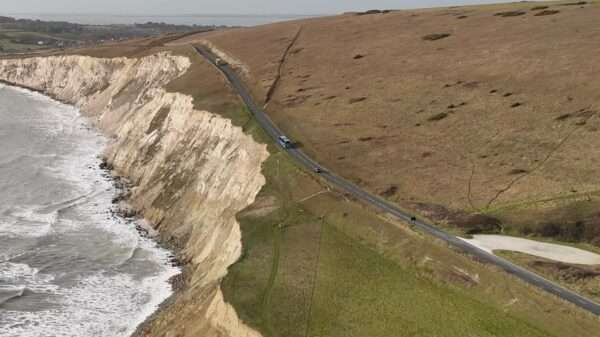Endangered hen harriers are being illegally killed when they fly into moors where hunters shoot grouse for sport, according to new tracking data.
In fact illegal killing is the main cause of death for older hen harriers, one of the UK’s most at-risk birds, the study said.
Young birds typically lived just 121 days after fledging, though estate managers said it was well documented that many die young due to fox attacks, the weather and prey scarcity.
The study, led by the RSPB, also found that illegal killings were highest in areas managed for red grouse shooting.
Using data from what is said to be the largest GPS tracking programme for hen harriers globally, the authors discovered a 10% increase in grouse moor use by the birds was associated with a 43% increase in the mortality rate.
Steven Ewing, RSPB senior conservation scientist and lead author of the study, said: “Hen harriers have been legally protected for almost 70 years.
“But this study adds to the already overwhelming evidence base that illegal killing on grouse moors remains a key cause of this species’ low population size and its ongoing absence from large areas of the uplands, particularly grouse moors.”
Hen harriers are one of the most vulnerable species in the UK, listed on the red list of birds of conservation concern.
The highest numbers dwell in Scotland, some 70-80% of the breeding population, mostly in Orkney and the Hebrides.
For the new study, published in the journal Biological Conservation, the RSPB and partners fitted satellite transmitters to juvenile hen harriers over six years at nests across Scotland, England, Wales and the Isle of Man.
Tags were deployed on 148 individuals, 86 of them in Scotland, funded by the Hen Harrier Life project.
Duncan Orr-Ewing, head of species and land management at RSPB Scotland, said: “This study reinforces the devastating impact that illegal killing is having on our hen harrier population, how strongly it is associated with grouse moors, and why urgent changes are needed to bring this to an end.
“There should be three times as many breeding pairs of hen harriers in Scotland than we currently have.”
But Mark Tennant, chairman of Scottish Land & Estates, questioned the transparency and interpretation of the tag data.
“RSPB Scotland has not provided the data it is using for this latest report to partners and this lack of co-operation undermines a collective effort to tackle raptor crime,” he said.
There are “different reasons why tags stop transmitting, not only persecution”, he added, saying it is “well established that there is a high natural mortality rate for hen harriers in their first year”, with the weather, fox and bird attacks and prey availability all playing a part.
“Any persecution of hen harriers – and any form of wildlife crime generally – is abhorrent and our members are committed to assisting Government and police in this area.
“In this regard, we recognise the official statistics published by the Scottish Government in its annual wildlife crime report, with the most recent report released last month confirming that offences against birds of prey are at historically low levels with 12 offences recorded in 2020-21.”







































